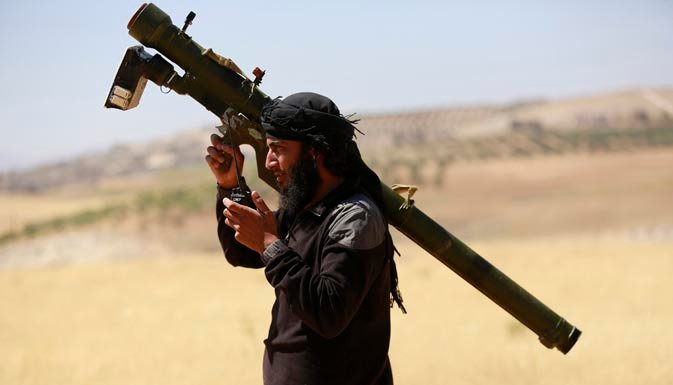The levels of light and small arms trading remains a serious security risk for businesses and personnel operating locally – and a particular concern for Western firms and citizens, who have been the repeated targets of recent attacks. Online arms acquisitions – particularly MANPADs – are likely to continue to be embraced by terrorist actors, parallel to these groups’ exploitation of social and online media more generally.
Some days ago, the Small Arms Survey and Armament Research Services (ARES) released a new study of online weapons trafficking in Libya. The results show how social media is mobilising the trade of black market weapons across North Africa. Most concerning are the whereabouts of Gaddafi’s stockpile of Soviet-made SA-7 surface-to-air missiles. How does the online availability of these weapons underline the terrorist threat to civilian aircraft?
ARES’s dataset of online transactions serves up a valuable insight into the types of weapons which are freely changing hands in Libya. It is unsurprising that small arms – pistols, rifles, and other hand-held weapons – are the most prevalent weapons type traded online. More significant are the findings on light weapons, or portable anti-aircraft, anti-tank, or heavy machine guns. With these weapons trading at higher costs (from US$5,900 for heavy machine guns, to US$62,000 for a ZPU-2 14.5mm anti-aircraft system) only better resourced militants are likely to be able to acquire them.
Among the sales of light weapons documented, the unguided shoulder-held RPG-7 was the most common rocket-launcher traded. ARES also uncovered sales of five types of anti-tank guided weapons (ATGWs), in addition to Russian and Swiss-manufactured hand-held grenade launchers. But most concerning of all, ARES uncovered two man-portable air-defence systems (MANPADS) claimed by the sellers to be complete, as well as a small number of missile tubes and gripstocks sold without the remaining systems. MANPADs are essentially shoulder-launched surface-to-air missiles. They can be used to target low-flying civilian aircraft or helicopters, or indeed any aircraft at the vulnerable points of take-off and landing.
The findings come at a time when Islamic State (IS) and Al Qaeda in the Islamic Maghreb are competing against one another for regional influence. Both groups are known to be working hard to acquire weapons. Competition often leads to escalating one-upmanship, with tit-for-tat terror attacks designed to attract local recruits. Some of these have included spectacular recent attacks on foreign targets in Mali, Burkina Faso, and Ivory Coast.
Given their size and mobility, functioning MANPADS would be a highly effective weapon for a terrorist group such as IS, which routinely targets civilians as part of its military and propaganda strategy. Targets in civil aviation are frequently referenced in terrorist propaganda material, underlining their prestige. To date, IS-linked groups have not yet succeeded in downing a civilian aircraft using a guided rocket (though they have succeeded in this goal through smuggling explosives into an airliner’s hold). And, only a few instances of guided missileattacks by terrorists on aircraft have been recently recorded in North Africa.
A caveat to this threat concerns the motives behind some of these sales. In some cases arms traders may want to dispose of obsolete or unwanted arms. IS- and Al Qaeda-linked militants may be able to purchase the weapons online with ease, but whether these would be fit for use is not guaranteed.
Indeed, starting from $2,900, the MANPADS components appear to have been advertised relatively cheaply. It might be reasonable to expect higher prices given the prestige attached to successful aircraft attacks and the expected levels of demand.
There are a number of reasons why many MANPADS from Gaddafi’s stockpiles may now be unusable. Even before the NATO bombing of Libyan weapons stores in 2011, UN and US officials believed many of Gaddafi’s poorly maintained missiles to have fallen into disrepair. After the regime fell, the US military located and destroyed 5,000 shells from among the stockpile. Would the leftover weapons have been better maintained by their traffickers?
Still, the Algerian government’s weekly seizures of smuggled weapons caches (including a number of single-barrel ZPU 14.5mm heavy machine guns over recent weeks) demonstrate the continued scale of cross-border arms trafficking in North Africa. There is a distinct possibility that at least some guided missiles will have fallen into the wrong hands and remain intact.
The levels of light and small arms trading remains a serious security risk for businesses and personnel operating locally – and a particular concern for Western firms and citizens, who have been the repeated targets of recent attacks. Online arms acquisitions – particularly MANPADs – are likely to continue to be embraced by terrorist actors, parallel to these groups’ exploitation of social and online media more generally.

Alex Falconer is Analyst at PGI Intelligence.
Tatiana is the news coordinator for TravelDailyNews Media Network (traveldailynews.gr, traveldailynews.com and traveldailynews.asia). Her role includes monitoring the hundreds of news sources of TravelDailyNews Media Network and skimming the most important according to our strategy.
She holds a Bachelor's degree in Communication & Mass Media from Panteion University of Political & Social Studies of Athens and she has been editor and editor-in-chief in various economic magazines and newspapers.







































































































































































